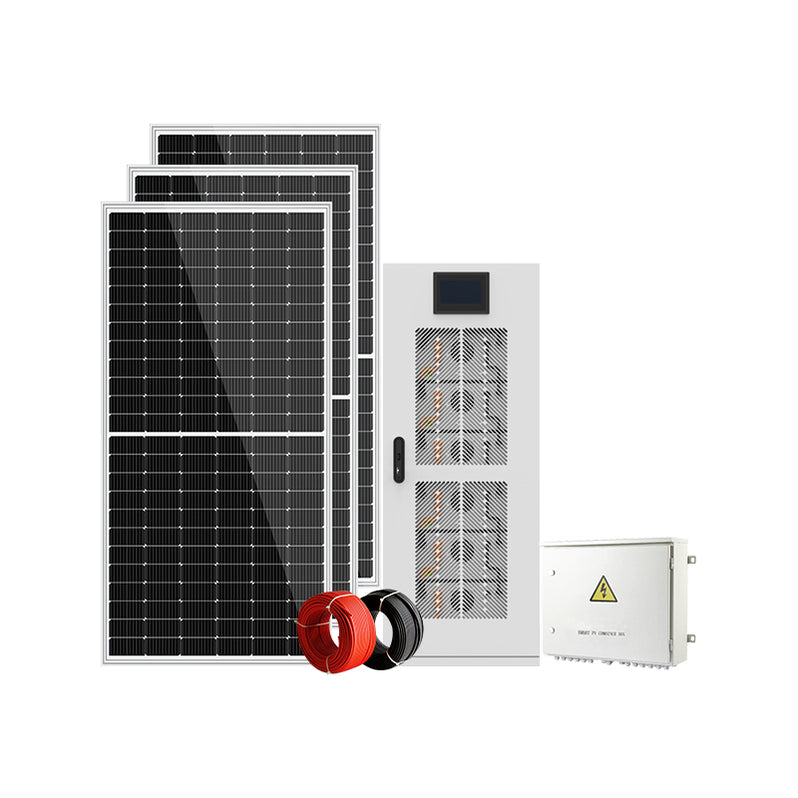Unlock the Secret to Energy Independence with Off-Grid Solar Solutions!
In a world increasingly focused on sustainability and energy independence, off-grid solar systems have emerged as a beacon of hope for those seeking autonomy from traditional power sources. These systems are particularly appealing for individuals living in remote areas where the electrical grid may not reach. With the rising interest in eco-friendly energy solutions, it’s clear why off-grid systems are becoming a popular choice. They not only help reduce electricity bills but also contribute positively to the environment by harnessing the sun's energy. Furthermore, the reliability of solar power, especially during outages or in areas prone to natural disasters, makes off-grid systems a compelling option for many. My friend Sarah, who lives in a rural area, recently made the switch to an off-grid solar system and has seen firsthand the benefits it brings in terms of both cost and peace of mind.

Understanding Off-Grid Solar Systems
Off-grid solar systems are designed to operate independently from the traditional power grid. Unlike grid-tied systems, which rely on the local utility for electricity, off-grid systems generate, store, and use solar energy entirely on their own. This autonomy is achieved through a combination of solar panels, batteries, and inverters. Solar panels capture sunlight and convert it into electricity, which is then stored in batteries for use when the sun isn't shining. Inverters play a crucial role by converting the direct current (DC) electricity stored in batteries into alternating current (AC) electricity, which is what most household appliances use. The flexibility of off-grid systems allows for customized setups, depending on individual energy needs and geographic location. Understanding these components is essential for making informed decisions about purchasing and installing an off-grid system.
Benefits of Off-Grid Solar Solutions
The advantages of off-grid solar systems are numerous and often compelling. First and foremost, they provide energy independence, allowing users to generate their own power and reduce reliance on utility companies. This independence translates into lower utility bills, which can be a significant financial relief, especially in areas with high energy costs. Additionally, off-grid solar systems promote sustainability by utilizing renewable energy, thus minimizing one's carbon footprint. They can be tailored to meet individual energy needs, whether for a small cabin or a larger home. My friend Tom, who installed an off-grid system at his vacation home, reports not only lower energy costs but also a profound sense of satisfaction in knowing he is contributing to a greener planet. The ability to customize these systems allows homeowners to ensure they have sufficient power for their specific requirements, making off-grid solutions a versatile choice.
Things to Consider Before Purchasing Off-Grid Solar Systems
Before diving into the purchase of an off-grid solar system, several crucial factors must be considered. First, it’s essential to conduct an energy needs assessment to determine how much power you require. This involves analyzing your energy consumption patterns and identifying which appliances and devices you want to power. Location suitability is also a key factor; areas with ample sunlight year-round are ideal for solar energy generation. The size of the system plays a significant role in efficiency and cost, so understanding your energy needs will help determine the appropriate system size. Additionally, budget considerations are paramount, as off-grid systems can vary widely in price. It’s highly advisable to consult with experts who can provide personalized solutions based on your unique circumstances. A thorough understanding of these factors will ensure your investment in an off-grid system is both effective and sustainable.
How to Request Quotes for Off-Grid Solar Systems
Requesting quotes for off-grid solar systems can seem daunting, but with the right approach, it can be straightforward. Begin by gathering essential information about your energy needs, including the average power consumption and peak usage times. When reaching out to suppliers, be transparent about your requirements and ask specific questions regarding system components, warranties, and installation services. It’s beneficial to compare multiple offers to find the best deal, but remember that the cheapest option isn’t always the best; quality and service should also be considered. Additionally, inquire about available financing options or incentives that may help offset initial costs. By equipping yourself with the right information and asking the right questions, you can navigate the quote process confidently and find an off-grid solar system that fits your needs.
Empowering Energy Choices with Off-Grid Systems
Off-grid solar systems are not just a trend; they represent a significant step towards achieving energy independence and sustainability. As the demand for renewable energy solutions grows, exploring off-grid options can provide individuals with the autonomy and reliability they seek. By considering personal energy needs and the various aspects of off-grid systems, potential users can make informed choices that benefit both their wallets and the environment. Investing in solar solutions is a proactive step towards self-sufficiency and a greener future, empowering individuals to live in harmony with nature while enjoying the comforts of modern life.








